It's an early start today, leaving Nairobi at 6 am and driving to Eldoret, near Naiberi. Enjoy lunch at the lodge and have some time to relax before an afternoon nature walk at the Kaptagat Forest which is home to many species of birds which will be of particular interest to birders. The Forest is in Elgeyo Marakwet County, and forms part of the larger Cherengany Forest Ecosystem and one of the five water towers in Kenya. Its ecosystem is also an important water catchment for Lake Victoria since all the main streams emanating from it join to form the Sosiani, part of the Lake Victoria watershed. The commonly known streams that commence or pass through the forest are Ndoroti, Kipsinende, Naiberi and Kapkei. The forest is also home to many wild animals such as the Sykes monkeys, antelopes, various species of birds, Rock hyrax etc. Return to the lodge after your walk and enjoy a refreshing dip in the pool. In the evening, enjoy a delicious dinner and the sounds of the African night as you fall asleep.

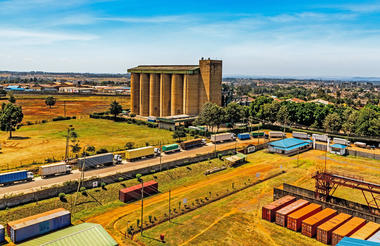
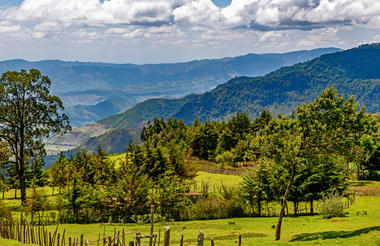
After a refreshing breakfast depart with picnic lunches for the Saiwa Swamp National Park, the smallest National Park in Kenya at only 3km². A veritable haven for nature lovers, the Swamp is a forested paradise filled with exotic flowers, trees and birds. It is also the habitat of the rare and endangered semi-aquatic Sitatunga antelope and is a sanctuary for the rare De Brazza’s monkey. Within this tropical wetland and mosaic of riverine forest, bird life is abundant. Water birds include the lesser jacana, grey heron and the African black duck. The forest shelters species such as Narina trogons, the collared and orange-tufted sunbird, the yellow bishop, Hatlaub’s marsh widow bird and the Noisy Ross’s turacos which are difficult to miss. In the late afternoon drive to Kitale Club, a country club and 18-hole golf course, squash courts, clubhouse with snooker and swimming pool and gym.
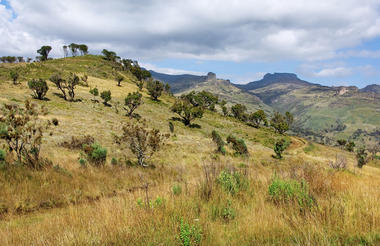
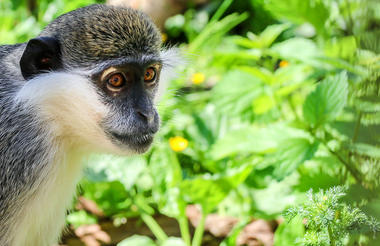

Today you will set out for Mount Elgon. The mountain is cloaked in forest and straddles the border between Kenya and Uganda. Mount Elgon is also known as Mount Masaba. Its basalt bluffs have been held sacred to local tribes for centuries. Its highest peak is called Wagagai and is across the border in Uganda. Mount Elgon is the eighth-highest mountain in Africa, famous for its towering cliffs, snaking river valleys, caves, and plunging waterfalls. It is riddled with caves formed from ancient lava tubes, namely Kitum, Makingeny, Chepnyalil, and Ngwarisha. Until recently the caves were used by local communities for traditional religious ceremonies. They are home to a wide range of creatures including bats and spiders. Kitum Cave is regularly visited by herds of elephants, dubbed the troglodyte tuskers, as well as bushbuck, duiker, and buffalo, all in search of the salts that are found in the mineral-rich earth of the cave. The Makingeny Cave, located not far from Kitum, has a spectacular waterfall over its mouth. It is a great spot for game viewing; other than elephants, other commonly sighted animals include leopard, buffalo, waterbuck, olive baboon, giant forest hog, duiker, and black and white Columbus monkey. Additionally, it is an important birding area with more than 240 species sighted. The finest views are from Elephant Platform, a flat outcrop overlooking the northern acacia-filled valley. If lucky, you will spot elephants heading into or out of the caves!
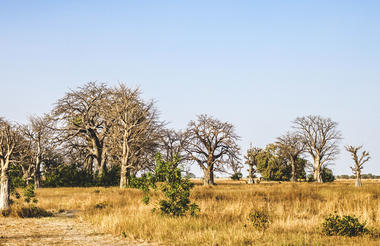
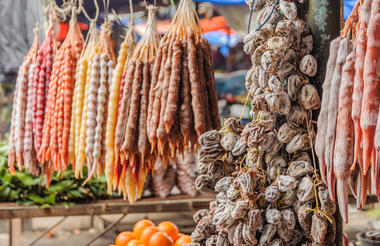

Today you will explore the beautiful Kakamega Forest and enjoy another picnic lunch. Time has stood still for the Kakamega Forest, a remnant of the rainforest that once stretched across Central Africa. This beautiful forest is home to various mammals including bush pigs, giant forest hedgehogs, colobus monkeys, Debrazzar monkeys and pottos. Birds seen here include the blue-headed Bee Eater, Black Billed Turaco, Turner’s Eremomela and Grey Parrots. Bird watching, hiking and rock climbing can be enjoyed here in the serenity of the forest that time forgot. In the afternoon you will drive to the shores of Lake Victoria to Kisumu.



Maragoli Hills is the unofficial boundary between Kisumu & Vihiga County. The hills are located just adjacent to the Mungoma caves and offer panoramic scenic views and are great for bird-watching adventures & hiking. It is rocky and steep, but the viewpoint is rewarding when you reach the summit. From the top of the hill, one can see the Nandi Hills, Miwani Plains, Ndere & Maboko Islands on Lake Victoria. Enjoy the distant view of Lake Victoria as it stretches out into the horizon, with expansive vegetation, and a lovely skyline. The view at the top is worth all the sweat broken while climbing.
Or
Kapsimotwa Gardens is a serene and secluded site located in the picturesque Nandi Hills, a highland area of lush green rolling hills at the edge of the Great Rift Valley. At about 2000m above sea level, the gardens are part of the Kapsimotwa farm – a huge Tea plantation that dominates the landscape. The farm was established in the 1930s by a British settler called Bushwell. From Kisumu, you go to Awasi and turn off to Chemeli, a picturesque road framed by lots of Jacaranda trees. Drive up the Nandi Hills to Kapsabet and turn in Kapsabet at the High school to the tea factory. Through all the tea plantations you will reach the garden on an easy driveway. Visitors can also tour the tea farms which were planted in the 1950s. They can also visit tea factories nearby and buy the processed leaves to carry home. The huge green tea fields are already so beautiful, but the garden is a jewel.
This garden has survived many generations from 1955 when it was started by an Australian white settler named Roy Mayer. She loved nature so much that she planted over 100 different flower species such as the Star of Bethlehem, English Blue bell, African daisy, jasmine, honesty, cardinal flower, Peruvian lily, hibiscus, granny’s bonnet, urn plant, African lilies, red roses and climbing orchids.
The gardens also boast of a number of both exotic and indigenous trees such as wild bananas, fountain, Nandi Flame, Nandi gold, Coco palm, Royal palm, and bamboo trees. Over the years, the garden has remained intact. In the middle, there are two ponds which are shaped like Australia and Africa continents. The water naturally seeps from a swampy ground and collects in the ponds.
If you are lucky, you will see monkeys like Colobus monkeys in the gardens either in the trees or sometimes even on top of the cars. You should take care of your food because they might snatch it! The Garden is a birding paradise too. At the highest point of the resort, one can view the breathtaking Lake Victoria in the neighboring Kisumu County as well as the Kisii hills



You will return by train to Nairobi. The train passes several stations:
Kisumu – Koru
This part of the train journey takes you through the heart of Kenya’s renown sugar plantation belt. The area is picturesque with the Nandi escarpment forming a great wall to the west and the open plains on the eastern side.
Kisumu is the third largest city in Kenya. What factors led to the emergence of Kisumu as one of the most important cities in Kenya as well as in the Great Lakes region? We argue that the Kenya-Uganda Railway helped make Kisumu one of the most important cities in Kenya and the Great Lakes region.
On December 20, 1901, Florence Preston, the wife of the engineer building the Kenya-Uganda Railway, drove the last nail in the last sleeper of the railway by the shores of Lake Victoria. Port Florence thus came into being. However, the city was only called Port Florence for one year; it then reverted to its original Luo name–Kisumu, meaning a place to look for food.
Kisumu lies at the northeastern edge of the Winam Gulf, a long, shallow arm that protrudes from the main body of Lake Victoria.
Kisumu emerged as a port in 1901. This can arguably be attributed to its location as the main inland terminal of the Kenya-Uganda Railway. The major aim for building the railway was to link the Kenyan coastal city of Mombasa to the interior in Uganda, which the British saw as being of high significance to their strategic and economic interests.
While drumming up support for building the railway, Sir Gerald Portal, the British Consul-General for East Africa from 1889-1892, and British High Commissioner to Uganda from 1892-1893, summed up the potential importance of the railway when speaking in the British Parliament by saying that the railway would "ensure the protection of the source of the river Nile from Britain's enemies; it would be a great potential market for British goods, and it would have a revolutionary effect in settling the region." He was successful in mobilizing the British government support for building the railway.
Koru – Lake Nakuru - Naivasha - Nairobi
This part takes you across the rich farmlands of the rift valley. Around Fort Tenan keep an eye out for the magnificent arch bridges built before 1899. Other stopovers are Londiani Stations and Elburgon, Nakuru, Gilgil and Naivasha.
You will take the whole day to Nairobi on the historic lunatic train.





